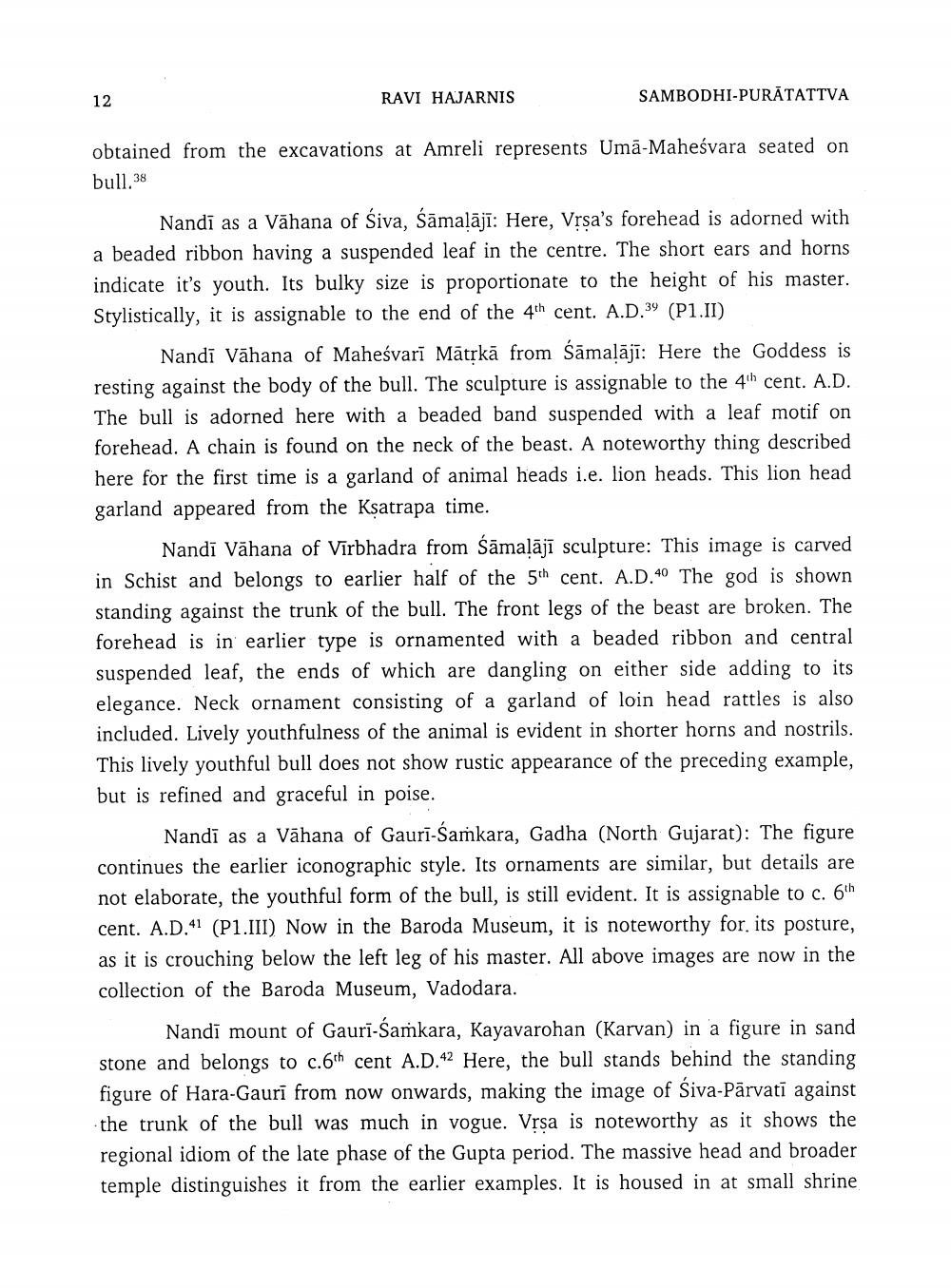________________
12
RAVI HAJARNIS
SAMBODHI-PURĀTATTVA
obtained from the excavations at Amreli represents Umā-Maheśvara seated on bull.38
Nandi as a Vāhana of Siva, Sāmalāji: Here, Vrsa's forehead is adorned with a beaded ribbon having a suspended leaf in the centre. The short ears and horns indicate it's youth. Its bulky size is proportionate to the height of his master. Stylistically, it is assignable to the end of the 4th cent. A.D.39 (P1.II)
Nandi Vāhana of Maheśvarī Mātrkā from Śāmalāji: Here the Goddess is resting against the body of the bull. The sculpture is assignable to the 4th cent. A.D. The bull is adorned here with a beaded band suspended with a leaf motif on forehead. A chain is found on the neck of the beast. A noteworthy thing described here for the first time is a garland of animal heads i.e. lion heads. This lion head garland appeared from the Ksatrapa time.
Nandī Vāhana of Vīrbhadra from Śāmalājī sculpture: This image is carved in Schist and belongs to earlier half of the 5th cent. A.D.40 The god is shown standing against the trunk of the bull. The front legs of the beast are broken. The forehead is in earlier type is ornamented with a beaded ribbon and central suspended leaf, the ends of which are dangling on either side adding to its elegance. Neck ornament consisting of a garland of loin head rattles is also included. Lively youthfulness of the animal is evident in shorter horns and nostrils. This lively youthful bull does not show rustic appearance of the preceding example, but is refined and graceful in poise.
Nandi as a Vāhana of Gaurī-Samkara, Gadha (North Gujarat): The figure continues the earlier iconographic style. Its ornaments are similar, but details are not elaborate, the youthful form of the bull, is still evident. It is assignable to c. 6th cent. A.D.41 (P1.III) Now in the Baroda Museum, it is noteworthy for its posture, as it is crouching below the left leg of his master. All above images are now in the collection of the Baroda Museum, Vadodara.
Nandi mount of Gaurī-Samkara, Kayavarohan (Karvan) in a figure in sand stone and belongs to c.6th cent A.D.42 Here, the bull stands behind the standing figure of Hara-Gauri from now onwards, making the image of Siva-Pārvati against the trunk of the bull was much in vogue. Vrsa is noteworthy as it shows the regional idiom of the late phase of the Gupta period. The massive head and broader temple distinguishes it from the earlier examples. It is housed in at small shrine




